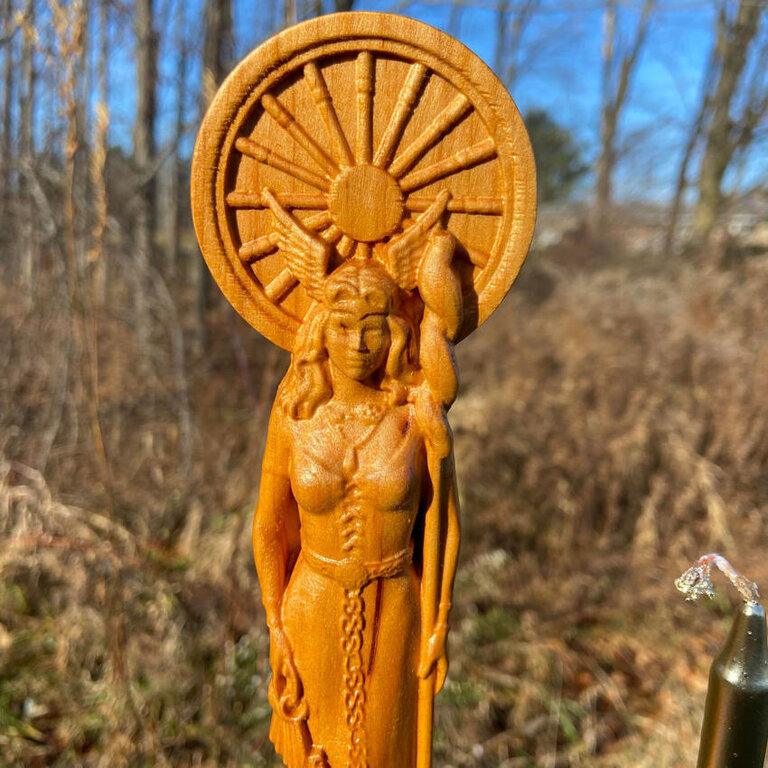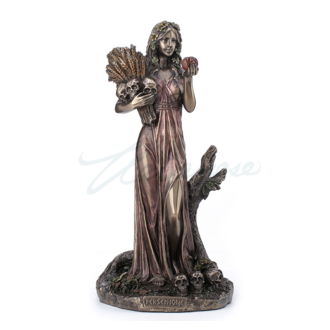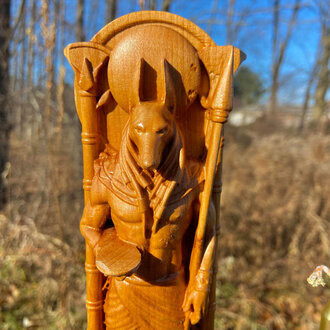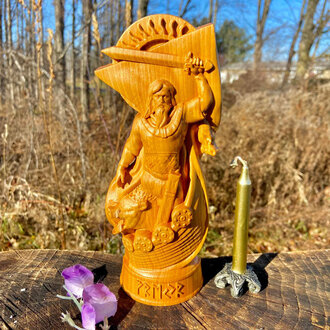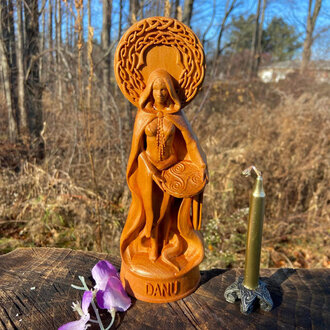
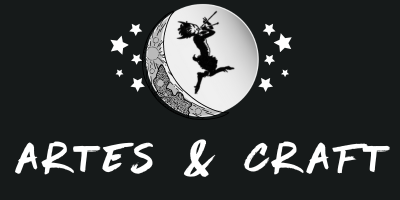

Login
Log in if you have an account
Register
Having an account with us will allow you to check out faster in the future, store multiple addresses, view and track your orders in your account, and more.
Create an accountWe proudly import these from Northern Europe! A small pagan company in Ukraine hand carves these amazing altar statues of the pagan gods and goddesses BY HAND! Most pagan statues on the market are “cold cast resin” – which is fine, but they are basically resin/plastic and mass produced. These are unique, every detail is hand carved! These are tools you will be proud to pass onto the next generation!
Approximately 9 inches high.
Carved from beautiful Alder, one of the famous Celtic Ogham trees. Alder trees feature often in Celtic Mythology and Folklore. They are said to be home to fairies, they are the symbol of Bran in Welsh Mythology and are most often associated with water, secrecy, nature, spirituality, and balance. Alder trees were a source of great mystery to the Celts. Their sap turns a deep red when exposed to the air, as if they could bleed when cut. The bleeding bark and affinity with water led to many negative superstitions about the trees. Alders were considered highly sacred, mysterious and secretive, often thought of as representing nature itself and containing the souls of our ancestors. For this reason Alder is a great choice for a hand carved pagan god or goddess statue for your ritual altar!
Best known as the wife of Odin, Frigg was a ruling member of the Aesir tribe and the queen of all Norse deities. Despite her leading status, Frigg’s place in Norse mythology remains uncertain. She was rarely discussed in primary sources, and her precise characteristics and personality remain unclear. Frigg held power over many areas of life, and was associated with fertility, marriage and the household, love and sexuality, and wisdom and prophecy.
Historically, most scholars considered Frigg to be an aspect of Freya a goddess of the Vanir tribe, as her basic characteristics aligned closely with those of Frigg. Like Freya, Frigg was a völva, or practitioner of the magical art of seidr, and sought to divine or alter the future through ritual. While the two goddesses were often presented as separate deities, they likely evolved from a single deity whose personality oscillated violently enough to merit separate identities. Freya, for instance, was known for sexual indulgence and promiscuity; Frigg, meanwhile, was more conservative in her sexual morality.
As wife of Odin, Frigg was the undisputed queen of the Norse gods. In art from the nineteenth and early twentieth centuries, Frigg was often depicted sitting on a throne or holding a commanding pose.
Frigg dwelled in Fensalir, a watery realm that likely took the form of a bog, marsh, or wetlands. She owned an ashen box called an eski, which the goddess Fulla toted around for her; the box’s contents were unknown. She was also known to have a set of falcon plumes that the gods, notably Loki, used to shapeshift into bird form.
